
| (one synonym: Chionophasma chrysophila) LYMANTRIINAE, EREBIDAE, NOCTUOIDEA | (donherbisonevans@yahoo.com) and Stella Crossley |
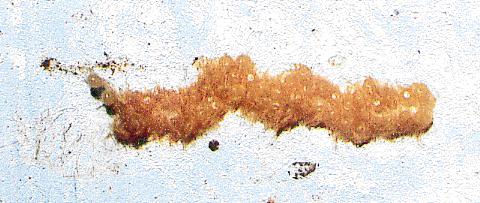
(Photo: Don Herbison-Evans, Bundaberg, Queensland)

| (one synonym: Chionophasma chrysophila) LYMANTRIINAE, EREBIDAE, NOCTUOIDEA | (donherbisonevans@yahoo.com) and Stella Crossley |

(Photo: Don Herbison-Evans, Bundaberg, Queensland)
The eggs of this species are laid in an irregular string on an sheltered surface, and covered in yellow scales.
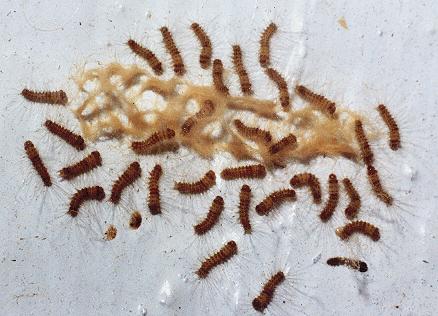
One Caterpillar was found in Bundaberg, Queensland, feeding on the fruit of:
but in Darwin it is commonly found on:
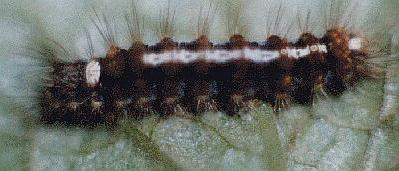
It has also been reported to feed on :
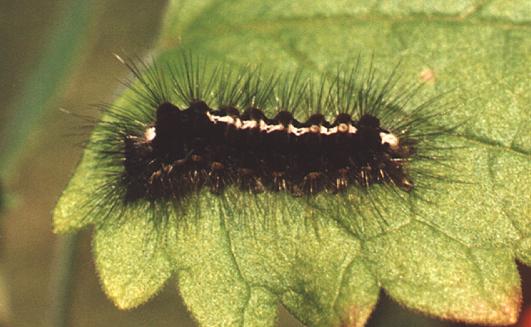
The caterpillar is black and hairy, with a wide dorsal white line running along the length of the abdomen, with a pink spot on the two penultimate segments, and a wide white spot on the thorax. One notable characteristic of the Caterpillar is its defence stance. The end closer to the head bends downward at about 90 degrees from the forward tufts and the body becomes quite rigid.
The hairs on this caterpillar cause Urticaria and Dendrolimiasis in sensitive individuals. If you or people in your family are sensitive, you will have to be vigilant and collect any larvae that you see into say a jam jar for transport a long way away. Killing in situ or even burning them is hazardous as the hairs from the dead larvae can blow about and cause more inflammation.
The caterpillar grows to a length of about 1.5 cms. It pupates in a sparse cocoon in a sheltered spot away from its food plant.
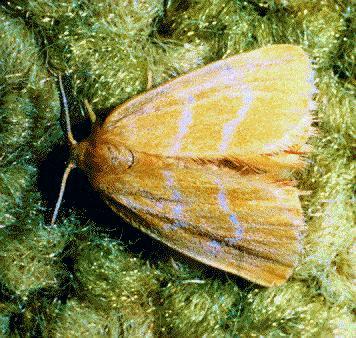
The adult moth has a hairy brown body. The forewings are yellow with two faint paler zigzag lines across each one. The hindwings are plain yellow. It has a wingspan of about 3 cms.
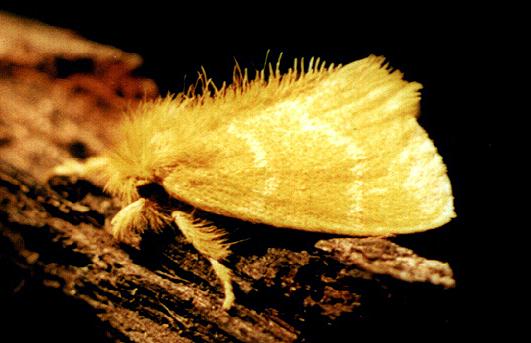
The underside is plain yellow.
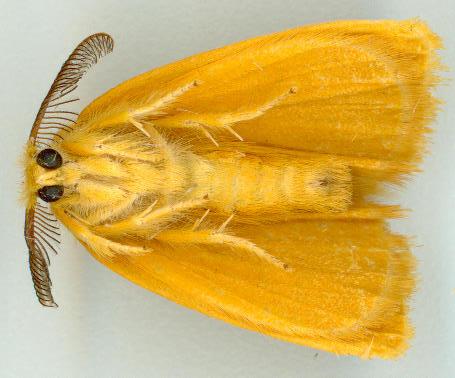
It is found over south-east Asia, including
and over much of Australia, including:
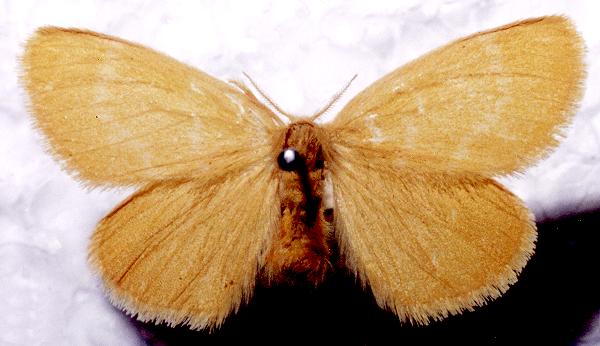
Further reading :
Ian F.B. Common,
Moths of Australia,
Melbourne University Press, 1990, fig. 43.14, p. 430.
Johan Christian Fabricius,
Historiae Natvralis Favtoribvs,
Systema Entomologiae,
1775, p. 574, No. 60.
Peter Hendry,
A Night at Ray's,
Butterflies and Other Invertebrates Club,
Metamorphosis Australia,
Issue 57 (June 2010), pp. 30-32.
Buck Richardson,
Tropical Queensland Wildlife from Dusk to Dawn Science and Art,
LeapFrogOz, Kuranda, 2015, p. 110.
Paul Zborowski and Ted Edwards,
A Guide to Australian Moths,
CSIRO Publishing, 2007, p. 177.
 caterpillar |  butterflies |  Lepidoptera |  moths |  caterpillar |
(updated 13 November 2010, 28 January 2025)